Family : Pentatomidae

Text © Prof. Santi Longo

English translation by Mario Beltramini
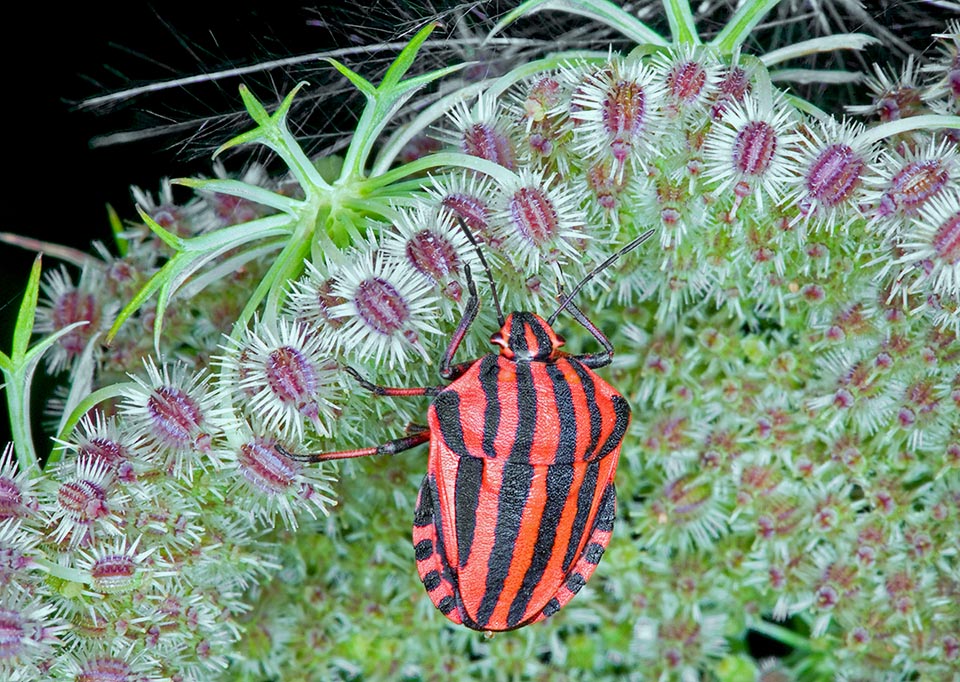
The Italian striped bug (Graphosoma italicum) is present in western Europe up to the Middle East, from the Iberian Peninsula to Iran © Giuseppe Mazza
The Italian striped bug, Graphosoma italicum Müller 1766, is a Heteropteran True bug of the family Pentatomidae that includes species characterized by the body having a rounded or sub pentagonal shape, with lively liveries and 5 articles antennae (antennomeres).
The docciform lower lip, or rostrum, is made up of 4 segments, inside which flow the buccal stylets designed to prick and suck vegetable and animal humors.
The dorsal part of the second segment of the thorax, called scutellum, is particularly developed.
The forewings are transformed into hemielitra, with the proximal half sclerified and the distal membranous. The hind wings are uniformly membranous and membranous; in the state of rest, they are covered by the front ones to which they are connected during the flight.
Numerous types of sensilla and friction stridulatory apparatuses are present on the integument; the striated surface of the second segment of the thorax, or metathorax, moves on a sort of comb located at the lower base of each forewing producing a characteristic sound.
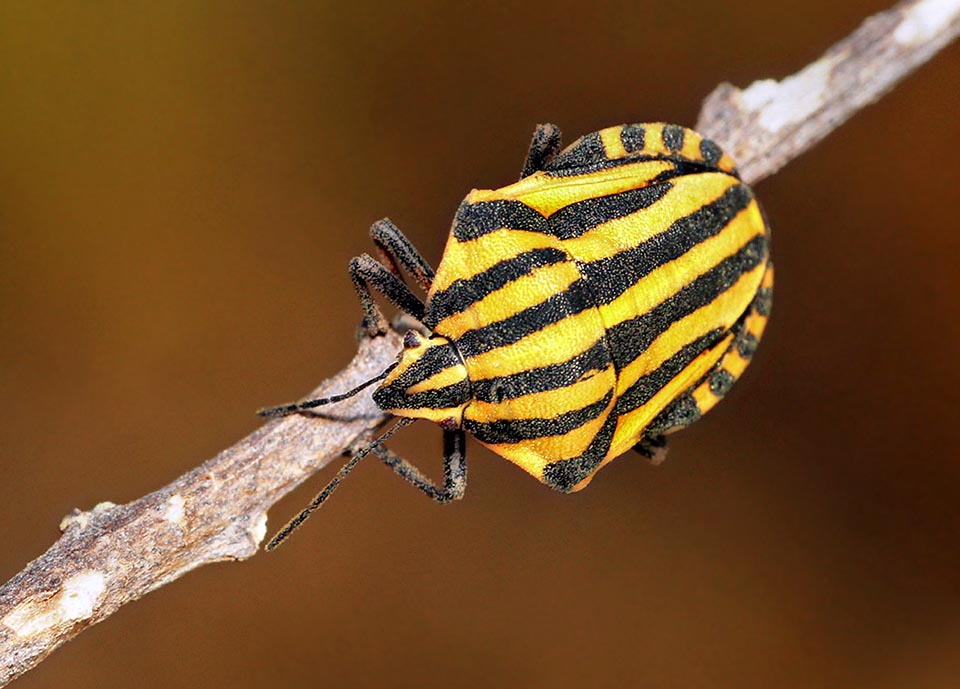
The typical aposematic livery, that with its lively chromatic contrast signals to the predators un unpleasant smell and taste, also displays a yellowish variant © Dionisio Cobos Barbero
The dorsal part of the second to seventh abdominal segments is separate and clearly identifiable. In the thorax and abdomen of the adults of many species there are repugnant glands whose secretions repel predators, especially spiders and birds and reptiles.
Described by Müller in 1766, considered a subspecies or synonym of Graphosoma lineatum, the species has been transferred to the genus Graphosoma established by Laporte in 1833, a term composed of which derives from the ancient Greek “γράϕω” (graph), to write, and from “σῶμα” (soma), body, with reference to the stripes and black dots present on the body, the specific epithelium italicum refers to Italy where the specimens described for the first time were collected.
Zoogeography
The Italian striped bug is present in Western Europe up to the Middle East. It is common in the north and center of the Italian peninsula.
In southern Europe, including the Italian peninsula, Graphosoma lineatum (Linnaeus, 1758) is present, widespread above all in North Africa and Asia Minor.
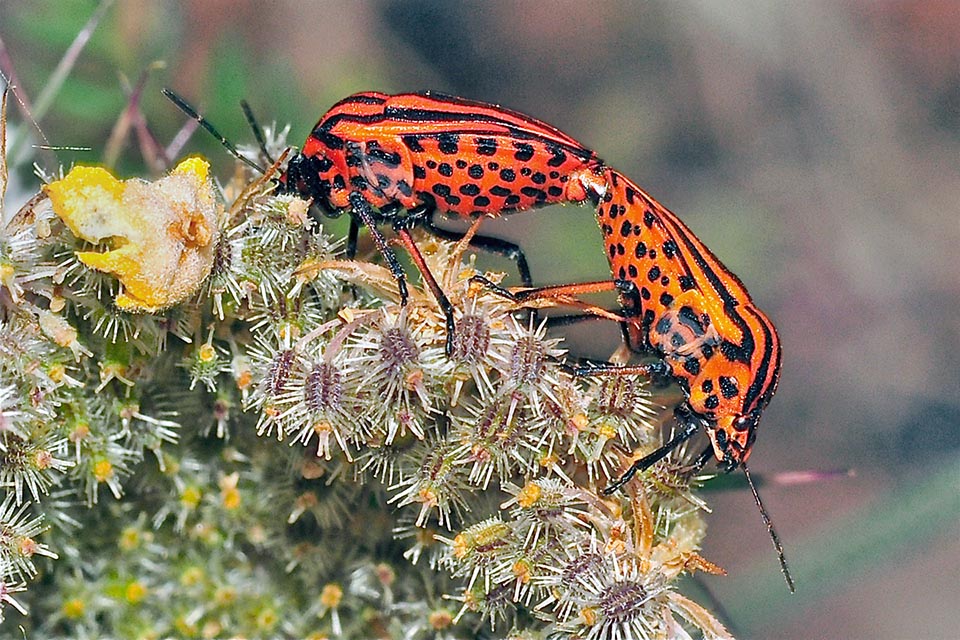
In the ventral part, well visible in this mating, are present dark spots more or less regularly arranged © Robert Combes
Currently, on the basis of the sequencing of the mitochondrial gene COI, the populations present in Italy are subdivided into two species: Graphosoma italicum and Graphosoma lineatum and into the 4 subspecies Graphosoma italicum italicum, Graphosoma italicum sardiniensis, present in Sardinia, Graphosoma lineatum lineatum and Graphosoma lineatum siciliensis, present in Sicily and in the Maltese archipelago.
Also widespread is Graphosoma semipunctatum (Fabricius, 1775) which macroscopically differs from the previous ones due to the black lines interrupted on the pronotum.
Ecology-Habitat
The various stages of Graphosoma italicum live in warm and sunny environments, on many spontaneous plants, especially Apiacea in uncultivated areas, including urban ones, and on industrial and vegetable crops with a preference for parsley, carrots and other umbellifers, puncturing their seeds rich in nutrients. On sunflower, in addition to the flowers, they sting seeds in formation. Normally the number of specimens present on the plants is not high and their presence is highlighted by the lively aposematic colouration.
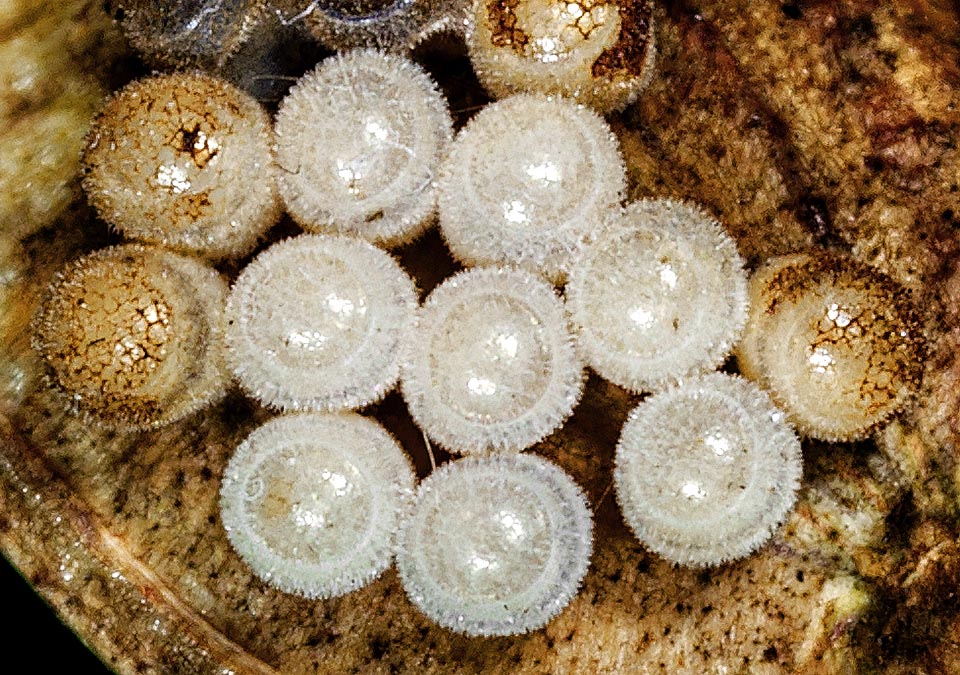
Ovation close-up. The clear and diaphanous look of the chorion, states that the eggs are now close to hatching © Simon Robson
Morphophysiology
Adults have a rounded body, 8 to 12 mm long. The livery is yellowish red, with wide black longitudinal bands. The dorsal part of the first thoracic segment has six black bands. In the ventral part there are dark spots arranged more or less regularly.
The antennae are blackish. The legs are black with the hind tibiae sometimes reddish. This characteristic is considered by the morphologists to be valid for distinguishing the species from the congener Graphosoma lineatum in which they are reddish with black spots.
The showy livery signals to potential predators the unpleasant smell and taste of the body given to the insect by the repugnant glands.
The yellowish barrel-shaped eggs are about 1.5 mm long; they are placed on the vegetation in ovations consisting of about thirty elements. The newborn nymphs, those of the second and third ages are respectively 2,4 and 7 mm long; they have a reddish or yellowish body with a blackish head and thorax and dark spots on the abdomen.
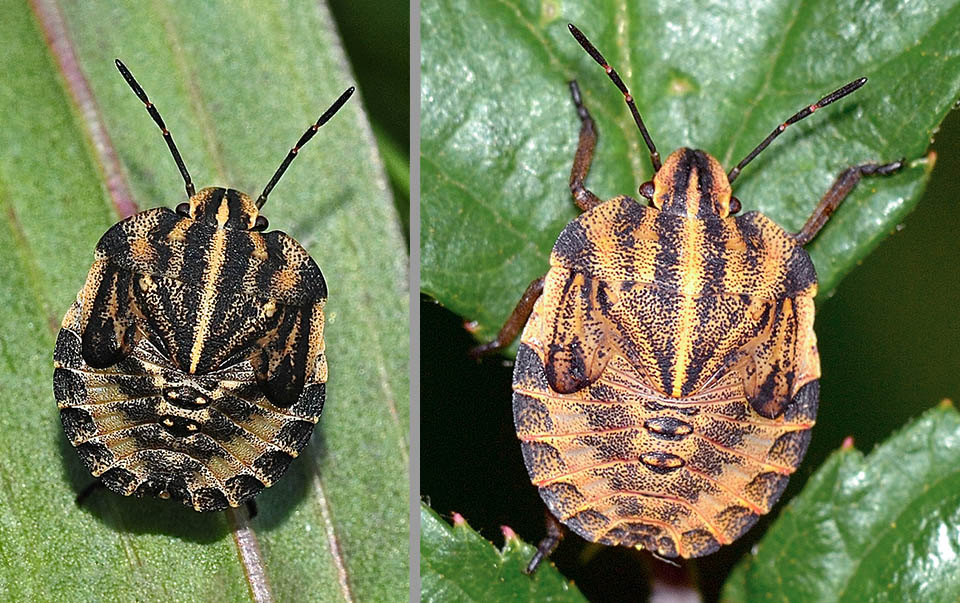
Left, first age nymph (© Robert Combes) and a second age one that precedes the adult stage on the right (© Jesus Tizon)
The nymphs, recognizable due to the presence of the alar outlines, have black spots on head, thorax and abdomen; they are respectively 9 mm in first age and 10 mm in second age long.
Quite similar is the livery of the various stages of the subspecies Graphosoma lineatum siciliensis of more reddish colour and with black legs, present in Sicily.
Graphosoma italicum, has been considered in the past a European subspecies of Graphosoma lineatum. DNA analysis has proved that it is a valid species close to Graphosoma rubrolineatum is the Mediterranean Graphosoma semipunctatum whose legs are black and the red and black bands are interrupted on the pronotum, where black points take form.
Ethology-Reproductive Biology
The adults of Graphosoma italicum during the coldest months transfer to various shelters and resume their activity in spring, when they fly on the host plants to feed and on which, after mating, the females lay groups of eggs.
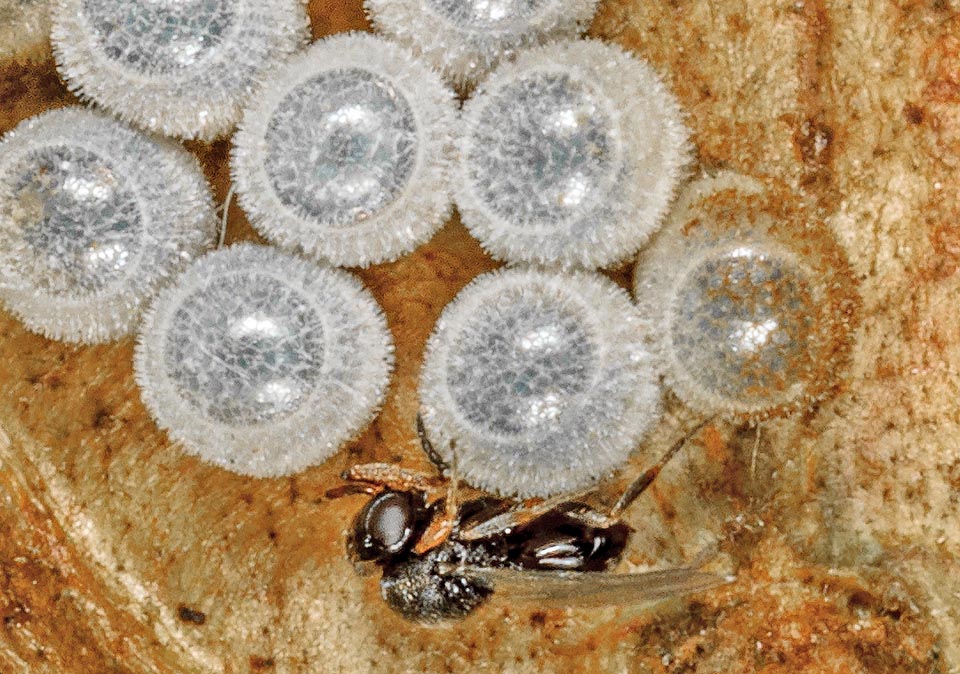
At times ovations are found by the adult females of parasitoid Hymenopterans that oviposit inside them, where the larvae will grow at the host expenses © Simon Robson
These ovature are often identified by the adult females of parasitoid Hymenopterans that oviposit inside some eggs, where their larvae complete the development at the expense of those of the Italian striped bug. The new adults flicker doing characteristic holes in the chorion. The most frequent species are Eupelmids of the genus Anastatus, Scelionids of the genus Trissolcus and Encyrtids of the genus Ooencyrtus.
Like in many other species of Pentatomids the mating takes place in opposite bodies; depending on the duration, if one of the partners decides to move the other one is obliged to follow it moving back.
The newly born neanids remain for some time near the maternal ovation, and then disperse on the vegetation, in the following ages. The preimaginal development completes by the end of summer, when the adults of the unique generation reach, flying, the shelters where they will spend the wintertime.
Synonyms
Graphosoma lineatum ssp italicum O.F. Müller, 1766.
→ To appreciate the biodiversity of RHINCHOTA or HEMIPTERA click here.
